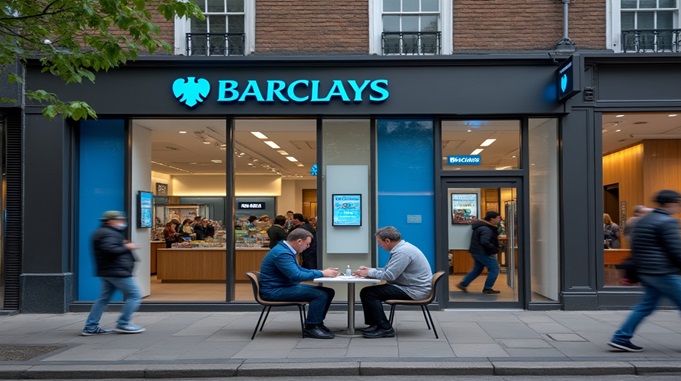
The UK government’s Bounce Back Loan scheme was introduced to provide relief to struggling businesses in 2020. The scheme offered loans of up to £50,000 with no interest for the first 12 months and a low-interest rate of 2.5% thereafter. With the scheme being extended until 31 March 2021, it was a great opportunity for small businesses to access the funds they needed to get back on track.
In this article, we explore how small businesses can pay back the Bounce Back Loan by following a few tips.
9 tips to help you pay back a Bounce Back Loan
If you are one of the small businesses who got a Bounce Back Loan, here are a few tips to help you pay it back:
- Acquaint yourself with loan agreement terms: Familiarize yourself with all aspects of the loan agreement, such as interest rate, repayment period, and any additional terms and conditions that might impact the repayment of the loan. This will give you an understanding of when payments must be made and what should be repaid back to creditors.
- Formulate a repayment plan: Craft a repayment plan tailored specifically to your financial circumstances by considering income, expenses, and any financial obligations. Being organized with this approach will allow you to stay on target with meeting your repayment goals more successfully.
- Minimize unneeded expenses: Reduce non-essential spending temporarily in order to free up additional funds for loan repayment. Look for areas such as dining out, entertainment, or subscription services where spending could be decreased in order to accelerate progress with loan repayment. Using savings generated through these methods to accelerate progress can hasten your efforts toward loan payoff. Furthermore, follow some money saving tips to pay the loan quicker.
- Prioritize loan repayments: Make it a top priority to repay your Bounce Back Loan on time each month by allocating some of your income specifically towards loan payments. By doing this, you can ensure timely payments.
- Communicate with your lender: If you anticipate financial difficulty or difficulty making repayments, it’s essential to communicate with your lender as soon as possible. They may be able to offer alternative payment plans or find potential solutions that make repayment more manageable.
- Contemplate debt consolidation or refinancing: Consolidating or refinancing multiple debts may help simplify repayment, potentially lowering interest rates or lengthening repayment periods to make monthly payments more manageable.
- Examine additional income streams: Look for ways to boost your income, such as taking on part-time work or freelancing, which could enable you to accelerate loan repayments faster. With more funds for repayments, progress can happen more rapidly.
- Avoid defaulting payments: Defaulting on loan payments can have serious repercussions, including damage to your credit score. Instead, make every effort to meet your repayment obligations on time; if any difficulties arise, reach out to your lender immediately so they may suggest possible solutions rather than defaulting.
- Evaluate your budget regularly: Conduct regular reviews of your budget in order to track its progress and make any necessary modifications, thereby keeping yourself financially on track to repay your loan on schedule. This will also keep your finances organized!
Advantages of Bounce Back Loans for Small Businesses
The Bounce Back Loan scheme offers several advantages to small businesses, including:
- Access to funds: Small businesses can access the funds they need to cover their day-to-day expenses and invest in their growth.
- Low-interest rates: The loan is interest-free for the first 12 months, and after that, a low-interest rate of 2.5% per year applies.
- Flexible repayment terms: You can choose to make interest-only payments for the first year, which will help you manage your cash flow.
- Quick and easy application process: The application process is straightforward and can be completed online in a matter of minutes.
Disadvantages of Bounce Back Loans for Small Businesses
While the Bounce Back Loan scheme offers several advantages, there are also some potential disadvantages to consider, including:
- Debt: Taking on debt can be a significant financial burden for small businesses, especially if they are already struggling financially.
- Repayment: The loan must be repaid within six years or extended to a 10 year term, which could put a strain on your cash flow.
- Interest: Although the interest rate is low, it still adds up over time and increases the total cost of the loan.
Bounce Back Loans vs. Other Government Schemes
Compared to other government schemes, the Bounce Back Loan scheme is more accessible and offers quicker access to funds. The loan application process is straightforward, and funds can be deposited into your account within a few working days. The interest rate is also lower than other loan schemes, making it an attractive option for small businesses.
However, the loan amount is lower than other schemes, such as CBILS, and repayment terms are less flexible. In addition, you must repay the loan within six years or extend to a 10 year term, which could put a strain on your cash flow.
Conclusion
The Bounce Back Loan scheme was an opportunity for small businesses to access the funds they need to survive and thrive during the economic fallout. The loan offered competitive interest rates and flexible repayment terms, making it an attractive option for small businesses. However, it’s important to consider the potential disadvantages of the loan, such as the debt burden and repayment terms, before applying.
If you were not eligible for a Bounce Back Loan or don’t want to take on debt, there are other government schemes available to support small businesses. It’s crucial to explore all your options and choose the one that’s best suited to your business’s needs. With the scheme being extended until 31 March 2021, there is no longer the option to take advantage of the financial support it offered.








